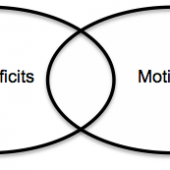
This study presents outcomes from the Girls Energy Conservation Corps, a research and development project that produced a series of six patch activity guides for girls age 8-14 who are members of the Girl Scouts of Eastern Massachusetts. The program focused on integrating engaging online and real world activities that involved girls in learning about climate change and their role in it, in saving energy, understanding the importance of collective goals and action to address climate change, and using new media creatively to educate peers and the community about energy conservation. Positive changes in knowledge, behavior, and attitudes pre to post suggest that a carefully designed program can address the challenges of educating children about energy conservation and climate change at this age, even if participant exposure to the program is brief. Findings also bring to light that developmental differences may be important to deconstruct in future studies when applying adult-tested behavior change models and theories to youth.
Continue Reading
Why don’t people adopt energy efficient appliances and curtail their behaviors to decrease energy use? People may not know which behaviors are truly effective and may be insufficiently motivated to change their behaviors. We focus on one area of this problem by first analyzing existing decision aids, tools available to help users make effective decisions. We explore EPA’s Energy Star program, DoE’s EERE calculators, and LBNL’s Home Energy Saver tool. We highlight their strengths and limitations and propose a framework to expand the functionality and uptake of the information through such aids. We suggest improvements along two broad areas. One area concerns the analytic capabilities and the information content of the decision aid, which focuses on (1) multiple goals and constraints, (2) hidden costs, and (3) heterogeneity in user characteristics. The other pertains to the framing so that users can easily process information through decision architecture by limiting choice overload and incorporating smart default options.
Continue Reading